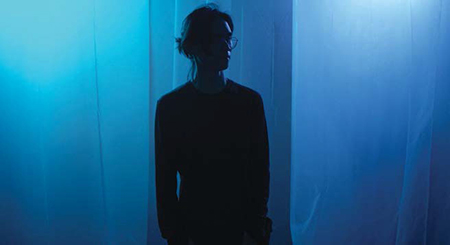Light Plus Color Equals Different Moods, Effects
Color temperature is one of the many properties of light that we can change and take advantage of when it comes to shooting. On most shows you will find yourself either changing, converting or correcting a unit with gels or an onboard dial that changes color temperature. Of course, there have been projects where I have been unable to fly, rig or strike anything, and completely utilize available light.

ENDLESS POSSIBILITIES
As with anything in lighting, there are countless possibilities in terms of effects and moods that can be created with color; all of these stem from the story. Location also indicates what the cinematographer should consider. Sometimes you are correcting or changing what available light is already there or even recreating an environment with which that the audience is familiar.
For example, traffic lights on a stage for a poor man’s process or even street lights outside of a window on location where there are none. Not only can we enhance the image with color, but every member of our audience associates colors with particular emotions. A strong understanding of the language of color is vital for a director of photography.
More often than not, we speak in two different base temperatures in lighting for cinema: tungsten (3200°K) and daylight (5500°K). Obviously, when we are lighting, we go all over the Kelvin scale having to deal with fluorescents, etc., but these are the foundation that we build from when putting a lighting package together and lighting a space.
The lower the number is on the scale, the warmer the color; and the higher, the cooler. Tungsten is orange and daylight is blue. Conversion gels, Color Temperature Orange (CTO) and Color Temperature Blue (CTB) will convert tungsten to daylight and vice-versa.

Set prepared with blue wash to blacklight scene in “Atlantis Gene” The most important thing to keep in mind is that color conversion gels also contain neutral density, so not only are you converting Kelvin by degrees desired, you are losing stops of light. If you are fighting some kind of tint on the green and magenta axis, color-correction gels (minus and plus green) will get you back in the right place if necessary to match or remove tint. Both color conversion and correction gels come in increments (an eighth, quarter, half, three-quarters) in order to be more specific.
For me, it is important to be specific in camera as opposed to relying on post production later to fix any problem. It is better to commit to decisions on the day and then enhance or take it back a step later, as our world of highly advanced post production still can’t fix everything you want to change in the end.
The professional video industry's #1 source for news, trends and product and tech information. Sign up below.
It seems LEDs are taking over lighting packages and sets, but I still defer to my tungsten Fresnels and HMI units a lot when building a package for an independent film. When it comes to color, it is very straightforward with these, except when dealing with an HMI that ran a little magenta—but no complicated fixes.
With LEDs, it used to be a bit more troublesome, as they would have lower Color Rendering Index ratings. CRI is a number on a scale from 1–100 that represents how accurately a particular light source can render all the frequencies of a specific color temperature that a natural source creates.
Now we have more efficient LEDs like the ARRI Skypanels or Mole Richardson’s LED Fresnels. In fact, my last music video was lit solely with LEDs and color was never an issue. I had high CRI ratings on my units that also drew much less power and gave me a huge output.
STREETLIGHT EFFECT
Stepping away from color correction and conversion, we find a plethora of fun colors. One of my favorite gels, if not my favorite, is urban vapor. This makes for a great streetlight effect, much like sodium or industrial vapor, as seen in this screen-grab from “The Return.”

Creating a streetlight effect with gels for “The Return”
Knowing the variety that is out there from manufacturers such as Lee and Rosco will help you know exactly what you want to use in whatever situation.
Another example of this type of set light is the blue wash we created for “Atlantis Gene.” Mark, my gaffer, is standing in in this frame, but you can see how the blue also backlights in this instance. Both of these examples create different moods for their respective scenes. One is a steamy scene at night, while the other is a much colder, ominous vibe. Both choices were made with the directors.
Observe color in movies since the beginning of color film. Humans have psychological connections to colors, and just like music, they set different tones for us. Color is part of the cinematic language we have created as filmmakers. It is just one of the many tools of the cinematographer, but one of the most powerful.
Julia Swain is a cinematographer based in California, whose narrative films include “Killing Animals,” “Jilted” and “Cassidy Red.” She continues to shoot on a variety of formats, seeking to create compelling visuals for every story and brand. She can be contacted throughTV Technology.
